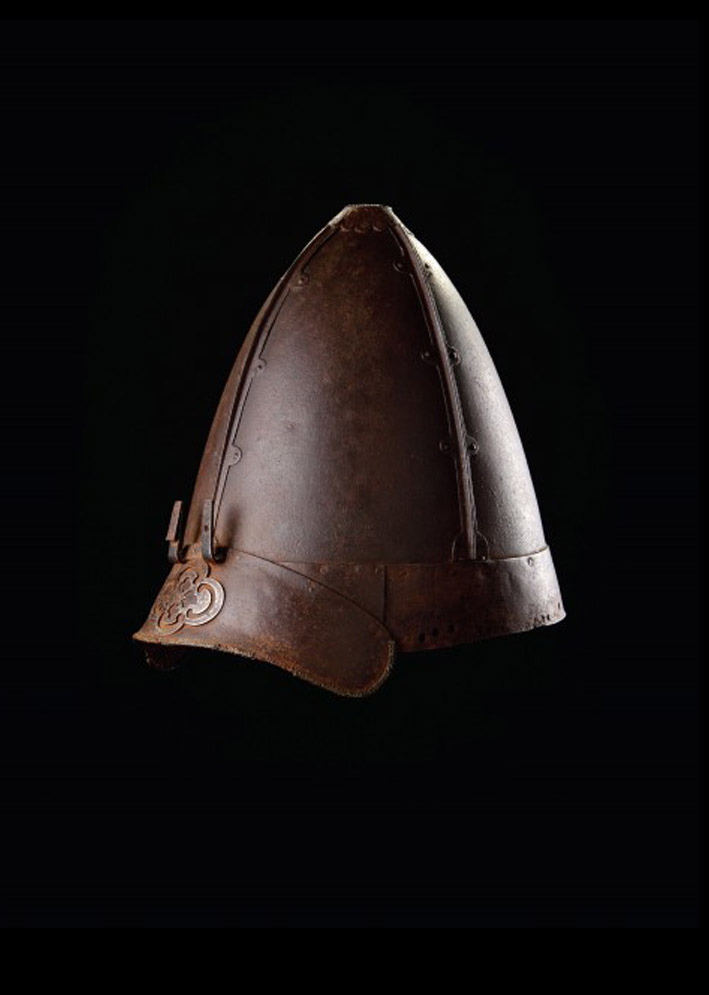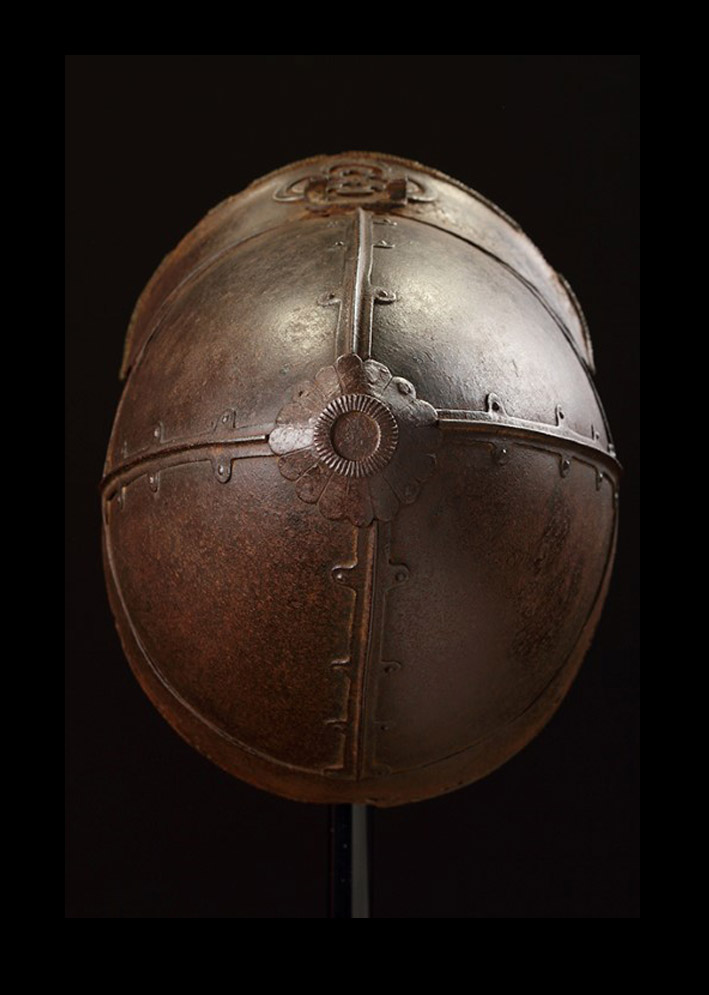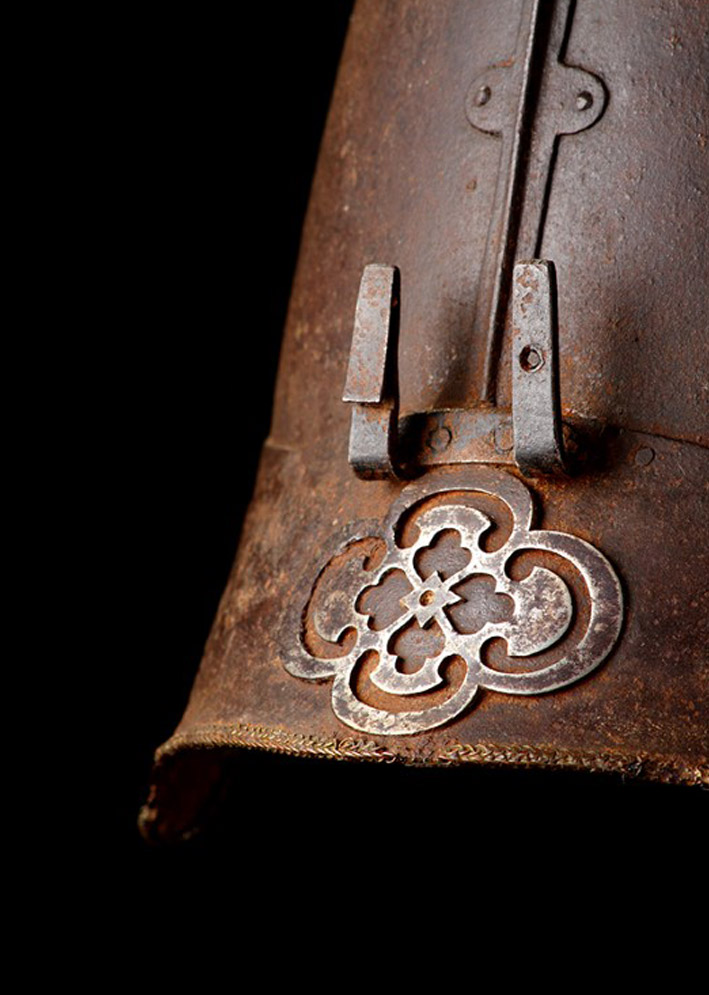Namban Kawari-Bachi
Korea/Japan
16th-17th Century
An intriguing Korean bowl converted to a Japanese style helmet with the addition of a koshi-maki (a narrow strip of metal forming the lower edge of a helmet bowl) and mabizashi (peak). Likely taken in 1594 by troops of the Prince of Hizen during Taiko Samu’s expedition from Japan to Korea in 1594 (McKillop p.115).
A four piece bowl of russet iron, it is joined vertically by means of riveted winged straps with a median ridge. A method that can be found on many North Asian helmets of Mongol form. The bowl is surmounted with a tehen no kanamono (ornamental fitting).
The koshi-maki and mabizashi (peak) applied in Japan, and in the centre a tsunomoto fixture, for a maedate (forecrest). Around the lower part are a number of apertures for the attachment of a full shikoro [neck guard]. An applied openwork iron Mon (Japanese family crest) is an unusual feature, and is in melon (mokko) form, see Chappelear & Hawley, p.18.
The brim of the original Korean bowl (internally visible) can be seen to be multi-pierced, suitable for chain-mail, a fashion not associated with Japanese helmets.
A number of Korean helmets mounted in the Japanese style are published, and preserved in private and public collections. Of note is a Korean helmet mounted with a Japanese shikoro in the Stibbert Museum, see Procacci/Robinson item 191a; another with a chain camail is illustrated by Żygulski, p.230.



